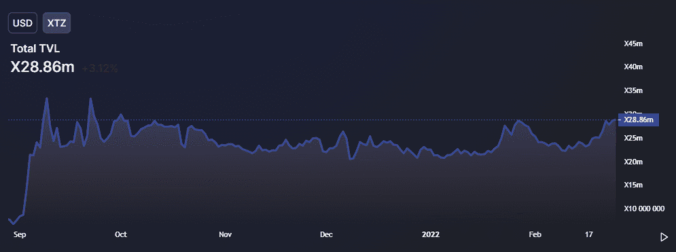With the substantial growth of the Ethereum network, numerous similar systems allowing smart contract deployment emerged trying to compete. While many of them kept outlining shining plans to become Ethereum killers, some remained silent and focused on growth instead of bragging rights.
This seems to be the case with Tezos – a decentralized open-source blockchain executing peer-to-peer transactions that saw the light of day nearly four years ago. It has stayed below the radar for a while without making any groundbreaking promises, but it kept building and developing its software, attracting new users, signing new partnerships, and everything in between.
Tezos Blockchain Upgrades
Ever since its launch, the liquid proof-of-stake (LPOS) network has undergone seven upgrades through on-chain voting due to its self-amendment mechanism. This on-chain voting was specifically designed to avoid the potential risks of a hard fork, which has already happened to numerous other blockchains.
The latest one announced in September 2021 and called Hangzhou promises to deliver a “new era” for the network.
“The Hangzhou upgrade will help set the stage for an expected 2022 consensus upgrade, Tenderbake, and introduce a number of new technical tools and patches.”
Some of the new additions will incorporate a feature allowing smart contracts to read the storage of other smart contracts. Another one will provide countermeasures against Block Producer Extractable Value, while context flattening will enable future optimizations to speed up blocks processing, and others.
Tezos Taking DeFi Market Share
The ability to allow developers to deploy smart contracts on its blockchain meant that Tezos is among the growing number of platforms that will be heavily involved in the decentralized finance space.
DeFi became a hot topic in the summer of 2020 when the total value locked across all projects stood around $1 billion. That same metric exploded in the following months and stands at just shy of $200 billion as of now, following the recent retracements in the cryptocurrency space.
Despite its relatively recent foray into the DeFi space, Tezos has already begun attracting players into its ecosystem, and the number of XTZ tokens locked is close to the late 2021 ATH.
A recent report from Tokeninsight informed that there’re over 100 dApps on Tezos with a primary focus on DeFi or NFTs. The project also aims to become the home of many protocols focusing on GameFi and the Metaverse.


I have been following your blog for a while now and have to say I am always impressed by the quality and depth of your content Keep it up!